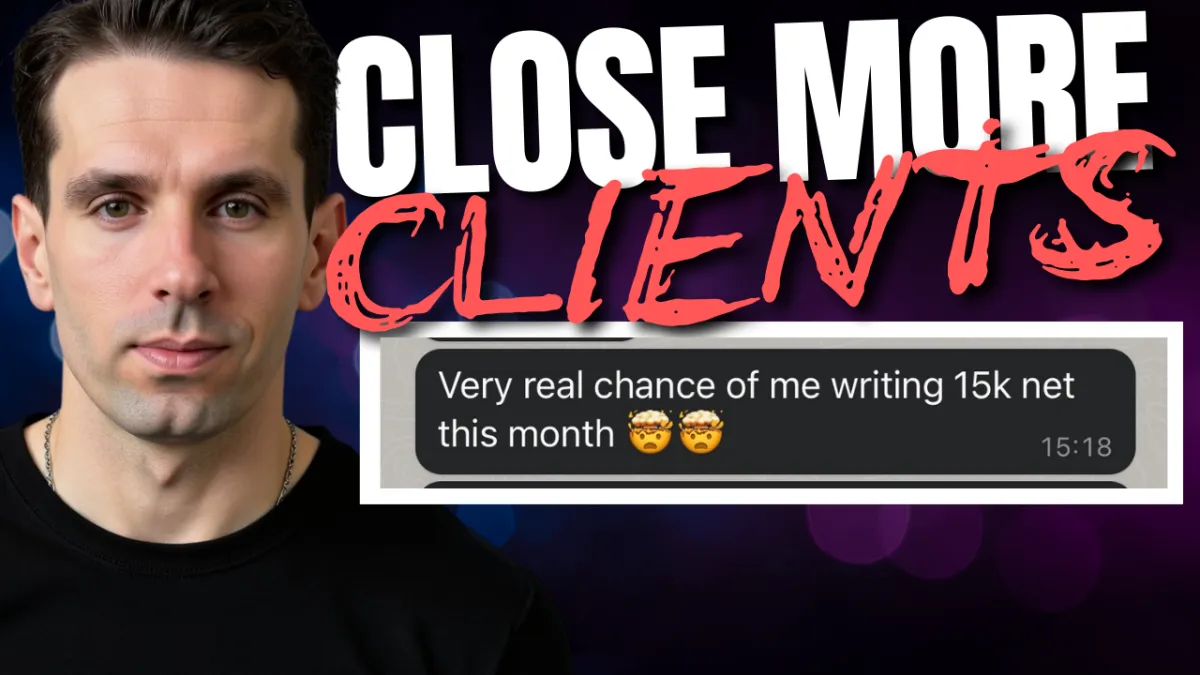
How to Master Discovery Calls and Close More Mortgage Leads
Discovery calls are a pivotal moment for mortgage advisors. They’re not just a routine part of your workflow; they’re your chance to build trust, establish credibility, and convert leads into loyal clients. If you’re struggling to consistently turn prospects into customers, refining your approach to discovery calls can make all the difference.
In this article, we’ll explore three key elements that every discovery call should include. By mastering these steps, you’ll be well on your way to improving your closing rate and building lasting client relationships.
If you want to watch the video of this content here it is
1. Show Clients You Understand Their Situation
When clients first reach out, they’re looking for more than just a mortgage solution—they’re looking for someone who gets what they’re going through. The most successful discovery calls begin with empathy.
How to Build Empathy in a Discovery Call
Start by asking open-ended questions that encourage the client to share their goals and concerns. For example:
“What’s brought you to this point in your home-buying journey?”
“What challenges are you currently facing with financing?”
“Where do you see yourself in six months regarding your new home?”
As they respond, actively listen and mirror their language. Reflecting their thoughts back to them with phrases like, “It sounds like you’re looking for clarity around affordability,” reassures them that you’re paying attention.
Another effective technique is to delve deeper when they mention something important. A phrase like, “Can we explore that a bit further?” shows your genuine interest in their situation and keeps the conversation focused on them.
Remember, for the first part of the call, it’s not about you—it’s about them.
2. Establish Credibility with Social Proof
Once clients feel understood, they’ll naturally wonder if you’re the right person to help them. This is where social proof comes into play. Sharing examples of how you’ve helped others in similar situations can reassure them that they’re in capable hands.
How to Use Social Proof Effectively
The key here is subtlety. Instead of simply stating, “I’ve helped hundreds of clients,” personalise the story to match their scenario. For example:
“I recently worked with a first-time buyer who was also unsure about how much they could borrow. Together, we built a plan, and now they’re comfortably settled in their new home.”
If you have case studies or testimonials, consider sharing these with prospects before the call. A follow-up email or pre-call resource that highlights real client success stories can set the stage for trust.
Avoid turning your discovery call into a sales pitch by keeping these stories conversational and relevant to the client’s needs.
3. Outline a Clear Plan for Moving Forward
Finally, clients need to feel confident about the next steps. A discovery call should end with a clear and actionable plan that shows how you’ll guide them through the process.
How to Present a Plan Clients Can Trust
Break the process into simple, digestible steps. For example:
“First, we’ll review your financial situation in detail.”
“Then, I’ll research and present the best mortgage options tailored to your needs.”
“Finally, I’ll assist you with the application process and support you until approval.”
This approach makes the journey feel manageable and collaborative. Using phrases like, “Here’s what we’ll accomplish together,” reinforces the idea that you’re a partner in their success.
By combining these three elements—empathy, social proof, and a clear plan—you’ll make saying yes feel like the obvious next step for your client.
Bonus Tips for Discovery Call Success
Block Adequate Time: Ensure you have enough time to fully address the client’s concerns. Ideally, your calls should last about an hour.
Follow Up with Clarity: After the call, send a personalised email summarising what you discussed and outlining the agreed next steps.
Be Consistent: Whether it’s the language you use or the structure of your call, consistency helps establish trust and professionalism.
Final Thoughts
Discovery calls are more than just a conversation—they’re an opportunity to create a lasting impression. By focusing on understanding your client, sharing relatable success stories, and providing a clear plan, you’ll transform your approach to these calls and significantly boost your conversion rates.
Want more strategies to improve your mortgage business? Download my FREE Mortgage Marketing Blueprint here.
For more actionable tips and insights, connect with me:
Or tune into the Mortgage Business Mastery Podcast on Apple Podcasts or Spotify.
Mastering discovery calls isn’t just about closing deals—it’s about building trust and lasting relationships with your clients. Start refining your approach today!
